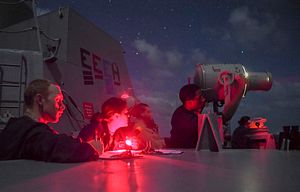The U.S. Navy has kicked off 2019 in the Indo-Pacific with a series of collaborative exercises in the East and South China Seas.
Last week, the U.S. Navy and the British Royal Navy conducted six days of coordinated exercises in the South China Sea, where both sides have independently conducted freedom of navigation operations.
USS McCampbell, a U.S. Arleigh Burke-class guided missile destroyer, and HMS Argyll, a British Type 23 Duke-class frigate, conducted operations in the region between January 11 and 16. “Professional engagement with our British counterparts allows us the opportunity to build upon our existing strong relationships and learn from each other,” U.S. Commodore Allison Christy said in a release.
The South China Sea, where six states have disputed claims over various islets, has been a growing area of concern for both countries in recent years.
At the same time as the coordinated drills in the South China Sea, USS Wasp, a U.S. amphibious assault ship, conducted two days of drills with a Japanese Maritime Self-Defense Force transport dock vessel, JS Kunisaki, according to a U.S. Navy statement.
USS Wasp was accompanied by vessels in its Amphibious Ready Group, USS Ashland and USS Green Bay. The East China Sea is the site of a dispute between Japan and China over the Senkaku Islands, which are administered by Tokyo, but claimed by Beijing as the Diaoyu Islands.
“It was a great opportunity to visit Kunisaki and see in person how well she and the ships of Wasp [Amphibious Ready Group] can operate together,” Capt. Jim McGovern, the commodore of the U.S. Navy’s Amphibious Squadron 11, said in a statement. “Our ability to work and train together with our JMSDF partners is a key enabler that ensures security and stability in the Indo-Pacific Region.”
The efforts across both regions underscore an ongoing effort by the United States to coordinate operations and exercises with allies in the region. In 2017, the U.S. convened a four-nation naval drill involving the Royal Navy, the Maritime Self-Defense Force, and the French Navy in waters off Guam.
The Trump administration’s January 2018 National Defense Strategy underscores the need for the United States to strengthen its “alliances and partnerships in the Indo-Pacific” by developing a “networked security architecture capable of deterring aggression, maintaining stability, and ensuring free access to common domains.”
These kinds of exercises will likely grow more common as that effort continues. Meanwhile, U.S. allies are increasing coordination between themselves as well. A recent high-level strategic dialogue between France and Japan underscored growing plans for maritime security coordination between the two countries.
Separately, the Maritime Self-Defense Force and the Royal Navy began conducting bilateral exercises for the first time in waters off Japan. Both countries additionally conducted transits to emphasize their presence in the South China Sea last year and conducted bilateral exercises in the Indian Ocean.

































